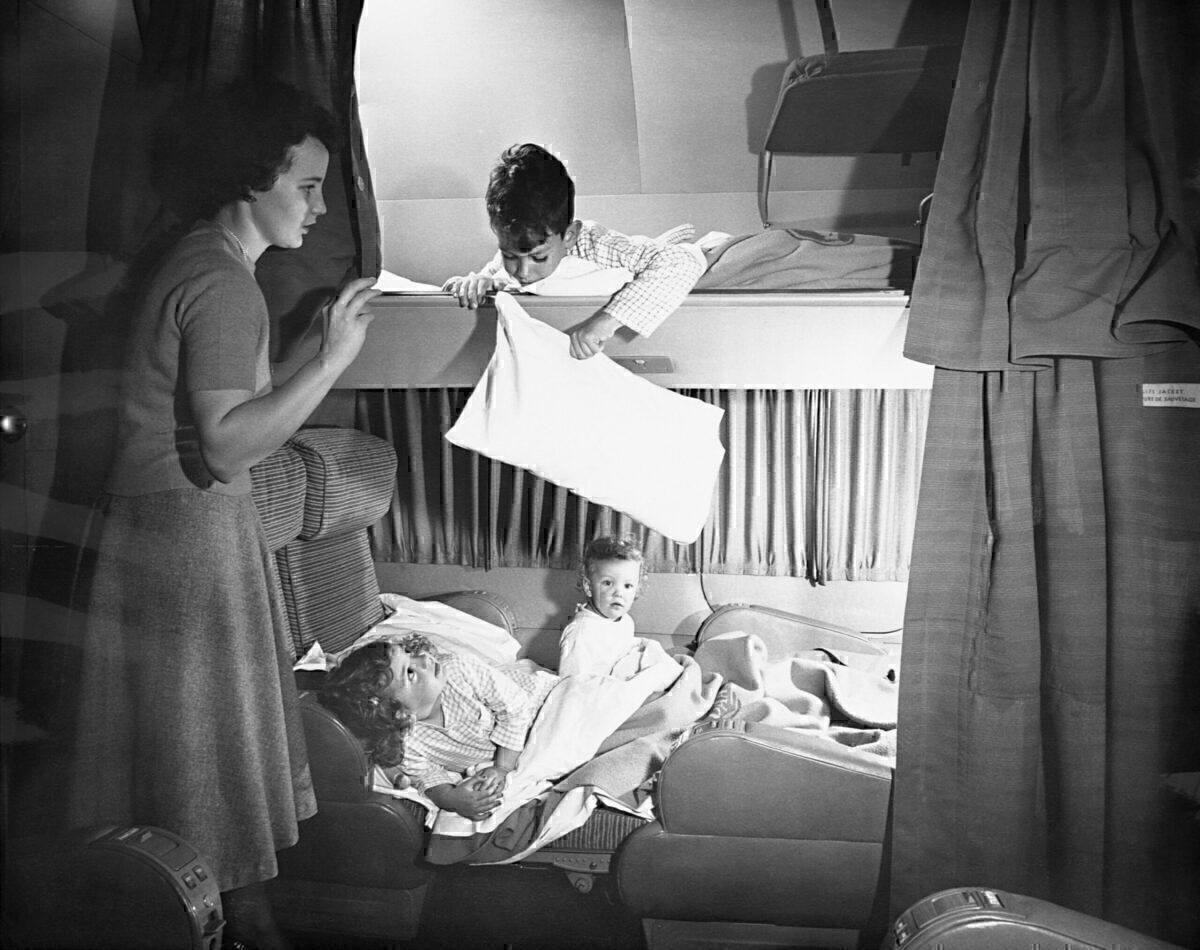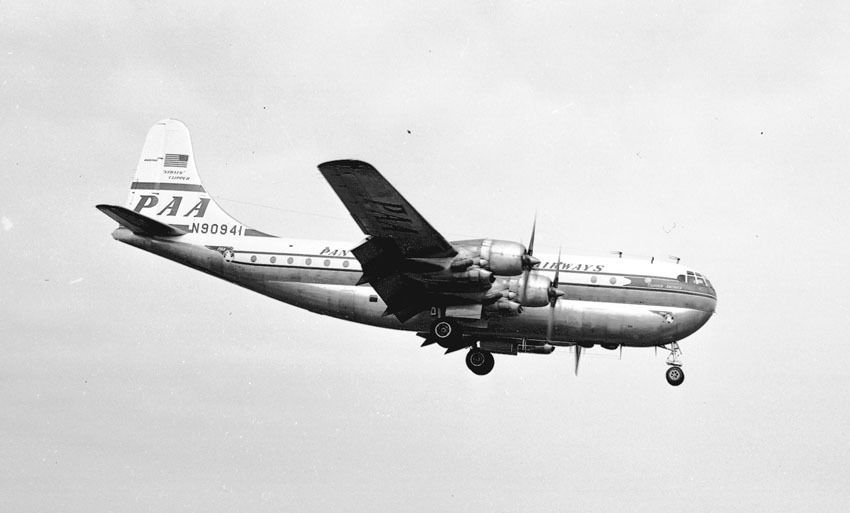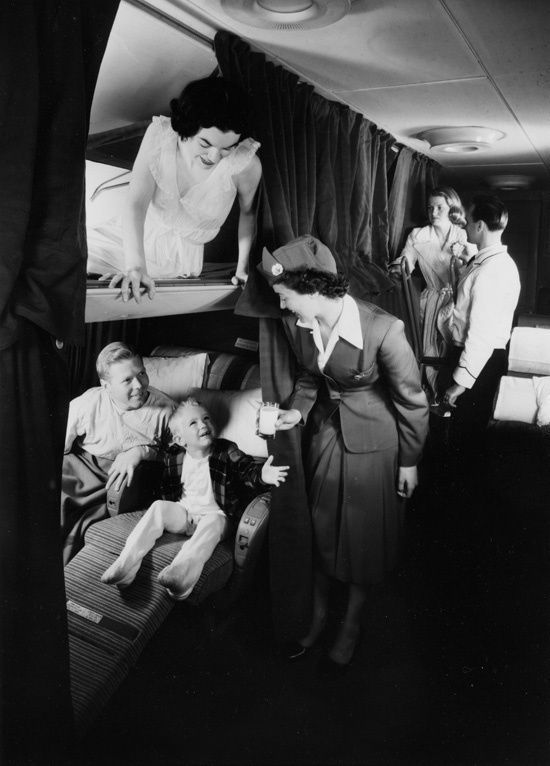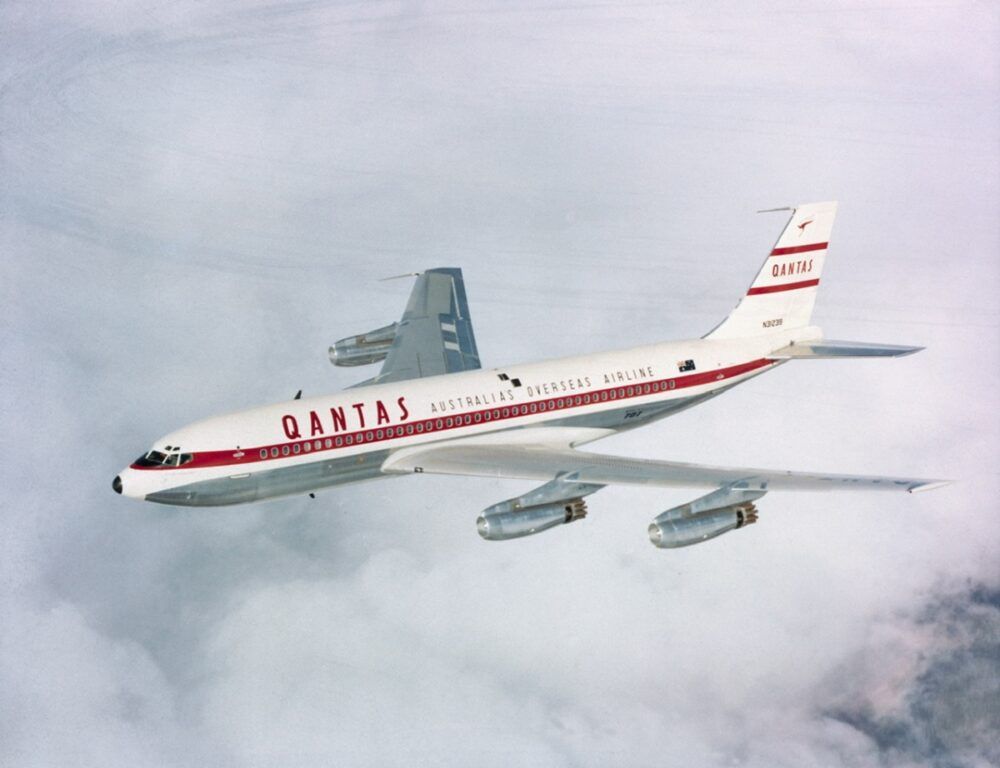With the space offered by the 747 and the A380, we have seen some improvements in onboard space and passenger facilities. Such developments are welcome but are not new. In earlier times, many aircraft offered luxuries and facilities we can only imagine today. The Boeing 377 Stratrocuiser of the late 1940s and 1950s was one of the best examples of this.
The Boeing 377 Stratocruiser
The Stratocruiser was a long-range piston engine aircraft from Boeing that first flew in 1947. It entered service with Pan American World Airways (Pan Am) in 1949. Overall, 55 aircraft were built for passenger service, with Pan Am being joined by several other airlines, including BOAC, American Overseas Airlines, Transocean Air Lines, United Airlines, and Northwest Airlines.
Pan Am operated 28 Stratocruisers in total. Its initial order for 20 (one of the most valuable aircraft orders at the time) was joined by eight more it gained from American Overseas. It remained in service with Pan Am until 1961.
The 377 marked a big step forward for Boeing in the passenger aircraft market. It used much of its experience developing military aircraft during the Second World War to create a large and powerful aircraft. A lot of the technology was based on the B-29 Bomber.
But it is the cabin and facilities it is most remembered for. It featured a double-deck pressurized cabin (a first for propeller aircraft). The two decks and their width offered some luxuries not seen in other aircraft at the time.
Spacious seats, beds, and a lounge
It could seat up to 100 passengers in a spacious and grand main cabin on the upper deck. Although Pan Am mostly operated it in a more spacious 47 or 61 seat configuration (according to the Pan An Museum). There was also a lounge on the smaller lower deck, where up to 14 passengers could relax.
The main cabin design was impressive. Wide seats were arranged in a 2-2 configuration, in a small mini-cabin with just eight seats and a larger main cabin. In both cabins, the space above the seats had pull-down beds, up to 15 in total. Some of the seats could also be converted into beds.
When closed, these upper beds looked very much like the baggage compartment we are familiar with today. But they pulled down to offer spacious flatbeds, each with a full-length curtain for privacy. Pan Am apparently even offered a 'breakfast in bed' service.
The main deck also featured large, separate male and female changing rooms. And a well-equipped galley. Pan Am partnered with French restaurant Maxim's to offer gourmet meals. The concept of airline economy class was yet to appear, and this certainly showed.
Stay informed: Sign up for our daily aviation news digest.
Luxury lost in the jet age
How much of a success the 377 was is debatable. It certainly introduced some great features and was popular with passengers. But with only 55 aircraft sold, it was hardly a great commercial success. Times were difficult in the years following the War. And it was not long before competitive jet aircraft entered passenger service.
The de Havilland Comet entered service with BOAC in 1952. It saw limited success, with several design and construction problems. But the Boeing 707 came soon after (Pan Am was the launch customer in 1958) and it was much more popular.
With the transition to jet aircraft, many of the luxuries of the 377 were lost. The focus switched to economics and carrying more passengers. Things started to change around 20 years later, though. The Boeing 747 again brought size and space back into aviation. While there were no beds above the seats if offered plenty of other luxuries. Lounges began to appear again, often making great use of the upper deck space and new service classes.
Would you like to share any thoughts on the Boeing 377, its seating, or place in the evolution of aircraft? Let us know in the comments.




